Texas's Wobbly Marriage to Oil and Gas
"The state has been flirting with some of those new-fangled energy sources. And maybe more than flirting, lately, we've jumped into bed with an eager, renewable energy mistress."
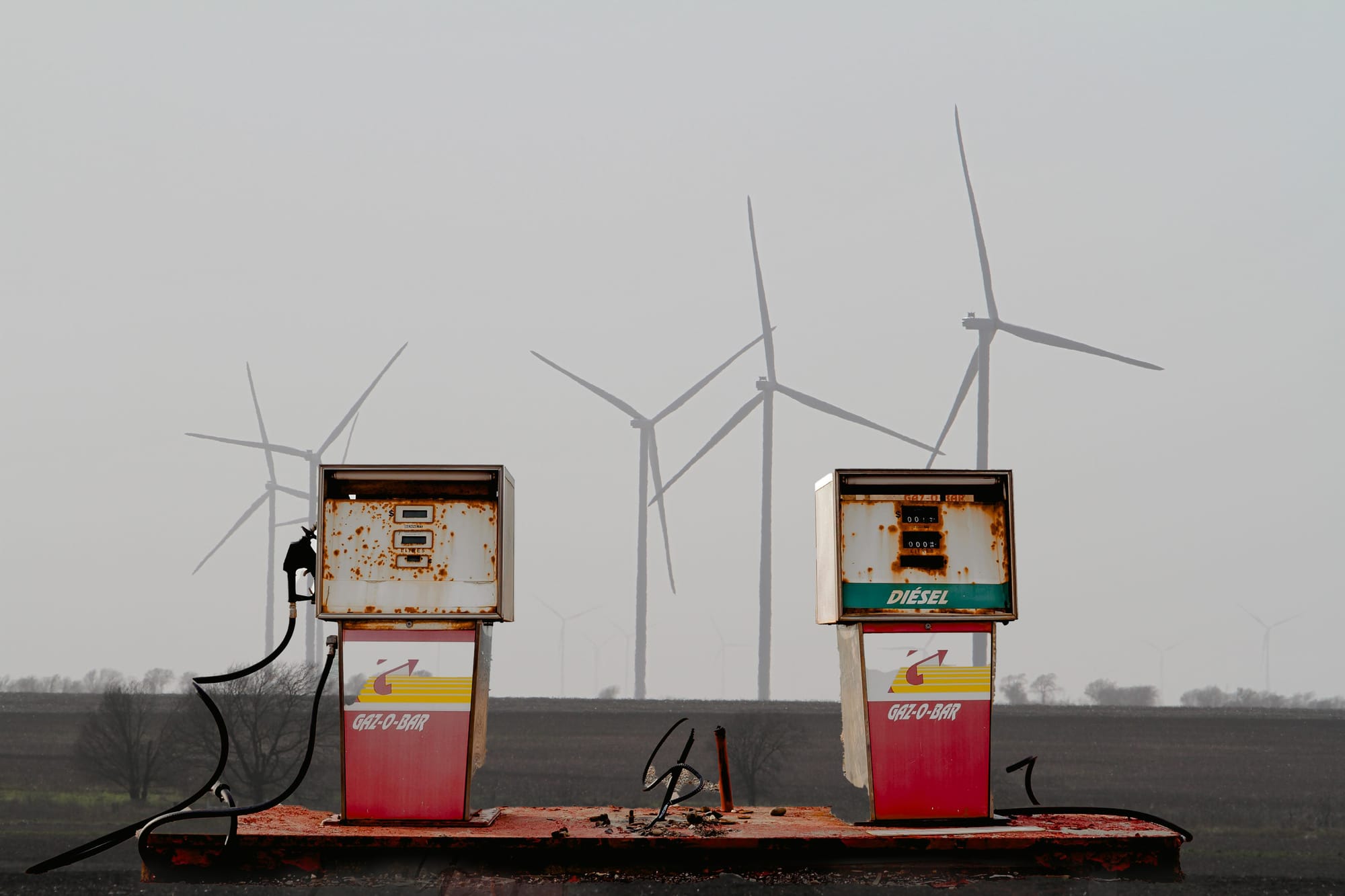
The fossil fuel industry has been a dependable spouse for Texas politicians and a loyal partner that keeps the Texas household humming along nicely. O&G money (and to a lesser extent, coal cash,) has been the foundation of the state's consistent growth and strong economy (state and local.)
Texas has its own, isolated power grid, which means that during peak power demand, there is no backup from the three primary national grids. Extreme weather events resulting from climate change are causing more (and longer) power outages. Summers are getting hotter, winters are colder. 2021’s Winter Storm Uri killed hundreds of Texans when ice and snow covered much of the state. Millions were without power for days as power usage spiked and power plants iced over. (Luckily, Senator Ted Cruz was able to turn tail and flee to the warmer climes of Cancun.) The governor and his minions lashed out at green energy policies, falsely blaming them for power shortages. (It was known and predicted that wind power would be reduced in the dead of winter.) But Texas does not have a "green energy policy," as such. The real culprit? Gas generation plants had failed to "winterize" their facilities and became inoperable. It took days for some of the plants to come online. Texas has demand pricing that allows producers to charge as much as $9,000 per megawatt hour in extreme demand situations. At that price for an extended time, several utilities went bankrupt. It was later discovered that the grid operator (ERCOT, Electric Reliability Council of Texas) made a $16 billion error in pricing during the winter storm. They kept their price tag at the maximum rate for two extra days. This 'accidental' cost was ultimately passed on to consumers.
Politicians work tirelessly to bring new industry to Texas even as we seem maxed out at times in our ability to provide power for new businesses and the millions of people who are a part of this growth. If our grid was dependent solely on traditional fossil fuels, we would have had to post a "Closed" sign up at the state line long ago.
Luckily for Texans both old and new, the state has been flirting with some of those new-fangled energy sources. And maybe more than flirting, lately, we've jumped into bed with an eager, renewable energy mistress. With Abbott and Patrick loathe even to say the words "climate change" much less discuss the renewable energy transition, it is quite a surprise for many to see how far and fast the state has come.
Renewables: Texas' attractive, young side piece
• Solar is now out-producing coal. In 2014, gas produced about 41% of Texas's generation, followed by coal at 36%. Nuclear and wind accounted for most of the rest. In March of this year, coal’s share slipped below 10%, while solar surged above 10%
• Texas got 47% of its electricity from zero-carbon solar, wind and nuclear in the first three months of 2024. Those resources delivered 40% of Texas generation for all of 2023.
• We have the most installed wind and utility-scale solar power in the United States, and the independent Texas electric grid carries a higher proportion of clean energy than any other.
• Nationally, Texas also leads in clean power construction projects, with more than 19,000 megawatts worth of clean power energy under construction.
• For a couple of peak periods in 2024, more than 80% of the electricity on its grid was generated from carbon-free sources.
• Texas started 2024 with 5.1 gigawatts of battery storage. It's predicted that the state will add another 6.4 gigawatts this year to end the year with approximately 11 gigawatts of online battery storage.
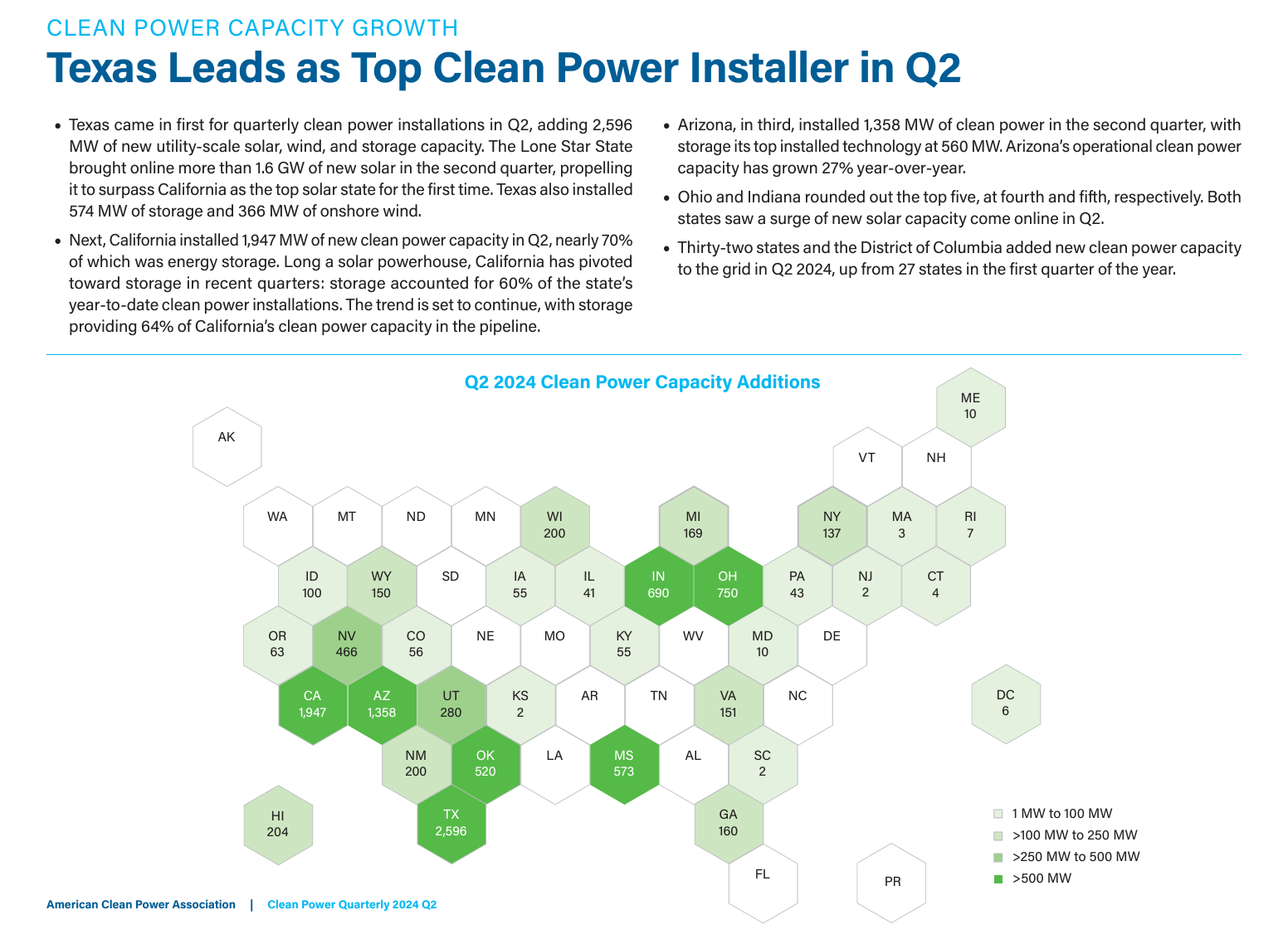
Mistresses Must Be Discreet
Abbott and Patrick, with the millions and millions of dollars tossed their way by oil and gas billionaires, continue to throw up roadblocks to prevent or at least slow down the growth of renewable energy. This is not a conspiracy theory or grumblings from someone interested in a cleaner planet. Remember, in an effort to privatize public education, just two billionaires are pushing through "School Vouchers," Vouchers are despised by a vast majority of Texans, especially those in rural areas whose entire communities revolve around local schools. The millions of dollars going into ultra-right-wing candidate's coffers are displacing even hard-right Republicans who are fighting for their constituents. If two billionaires can control the political fight over vouchers, imagine what a dozen can do to stand in the way of green energy. Imagine if corporate O&G interests teamed up to fight renewables.
Dozens of laws have been introduced to restrict the development of wind and solar farms. Others have simply attempted to boost investment in more gas plants, plants that even industry insiders suggest are not warranted. Low-interest loans are available through the state to develop gas-operated plants. One bill proposed a "a minimum energy quota, called a “firming requirement,” for wind and solar generators, even if it’s still and dark outside. The PUC could force clean energy projects to pay for electricity from fossil fuel plants, potentially making those businesses unprofitable." In 2021 Texas passed a law forbidding most state entities from contracting with companies that have reduced or cut investments in the oil and gas industry. That includes state pension funds and local governments issuing municipal bonds. They will have to divest from the companies that show a preference for renewable energy investments, even if they also have O&G assets in their portfolios! This does nothing to boost local investment in any kind of energy projects, it punishes green energy producers specifically, and worst of all, pension funds and others wind up earning less return on their investment dollars when hamstrung by these Luddites.

But here's the thing: since Texas prides itself on being business-friendly and very light on regulation - private investment has been able to rush in and build some massive wind and solar projects. Climate change deniers and naysayers never expected much of a future in renewables, so by the time they figured out that it was happening, it was up and operating. Just ten years ago, even optimists were projecting maybe 20% of electricity would come from turbines and solar panels. I worked at a small conference in that time frame where a group promoting renewable energy assembled a few conservative groups seen as influential business leaders. The subject was the opportunity that was happening around them. A very prominent Republican was tapped to host the meeting, and his main message was simply, 'Why should we miss out? This is a tremendous investment opportunity.' He pointed out that the docks at the ports of Houston and Corpus Christi were stacked with wind turbine blades and solar panels. "It's here. It's Now. It's happening." Some engineers and academics shared projections for growth that seemed overly optimistic at the time but proved to be wild under-estimations.
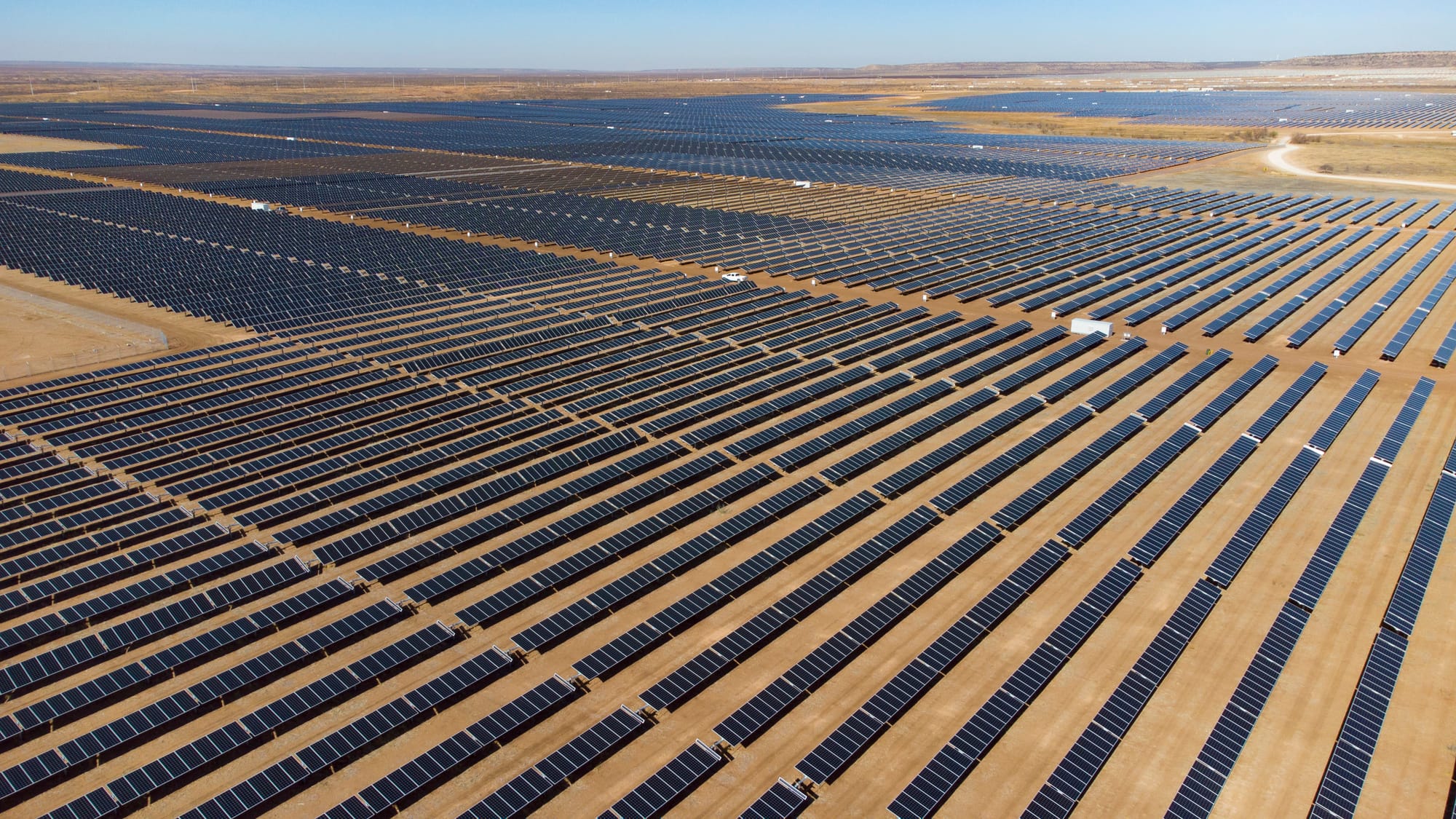
Doubters and partisan fossil fuel proponents scoffed at the idea of producing electricity by wind, which doesn't always blow. They also cleverly pointed out that solar panels didn't work at night! HA! Gotcha!!! It WAS hard to imagine powering a county, much less a single high-rise building from some kind of rechargeable battery that kicked in after the sunset or when the wind died down. Well, guess what? Battery technology has proceeded at such a pace that that's exactly what is happening.
Texas is now a huge player in battery storage. The batteries are lithium-ion type batteries, giant versions of your smartphone battery. There are no state incentives for battery farms. However, the cost of this technology has fallen by as much as 80% in the last ten years, and as with all renewable energy tech, federal subsidies and tax breaks have helped grow this business. And in a place like Texas, energy prices are volatile, so it's easy to drop some power on the grid at peak demand times to get a premium payout. Battery companies are able to buy electricity in the morning for close to $20 a megawatt hour, charge up their batteries, and sell it for $100 in the late afternoon," said Ed Hirs, an economist at the University of Houston. “On a not so normal day it could be $3,000,” he said. “On June 20, prices were bumping up against the ($5,000 wholesale power) price cap all day. What a windfall.” Big players are willing to invest in battery projects with that kind of profit in energy-shifting arbitrage.
At first, battery farms were just seen as a way to prevent small disruptions on the grid... if a powerplant unexpectedly went offline, for example. They are also very useful in providing a regulated, steady stream of 60-hertz frequency as power fluctuations pop up and down from the various sources coming on and off the grid. More and more, the potential is there for battery farms to function as a stand alone power source when demand goes through the roof... during the boiling hot days of summer, or when other plants fail due to severe winter weather disruptions.
Now that real money is being made on these new investments and technologies, politicians are paying attention. There's not the legacy wealth that is available from the fossil fuel industry, but these young, attractive new technologies are catching the wandering eyes of Texas politicians.

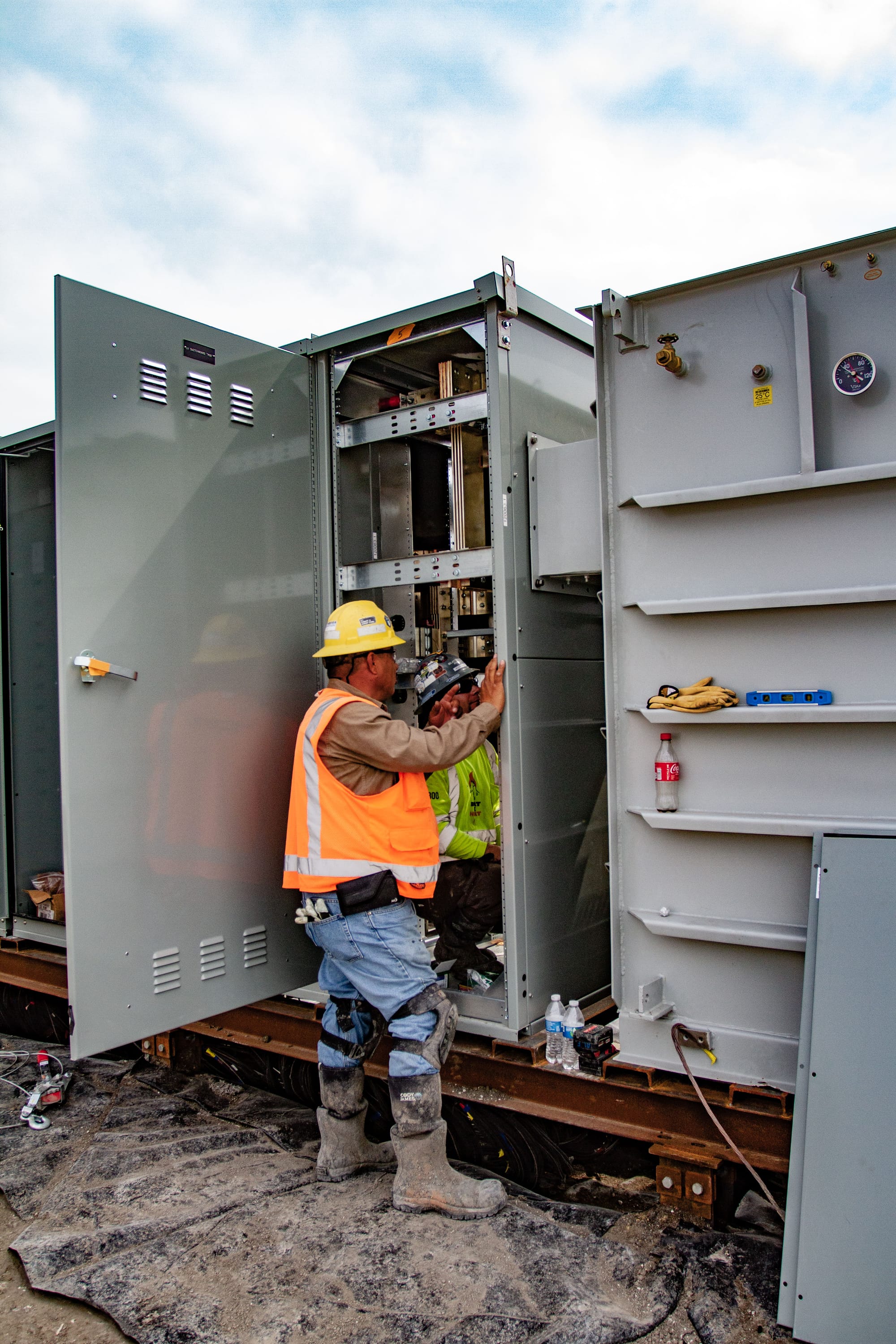
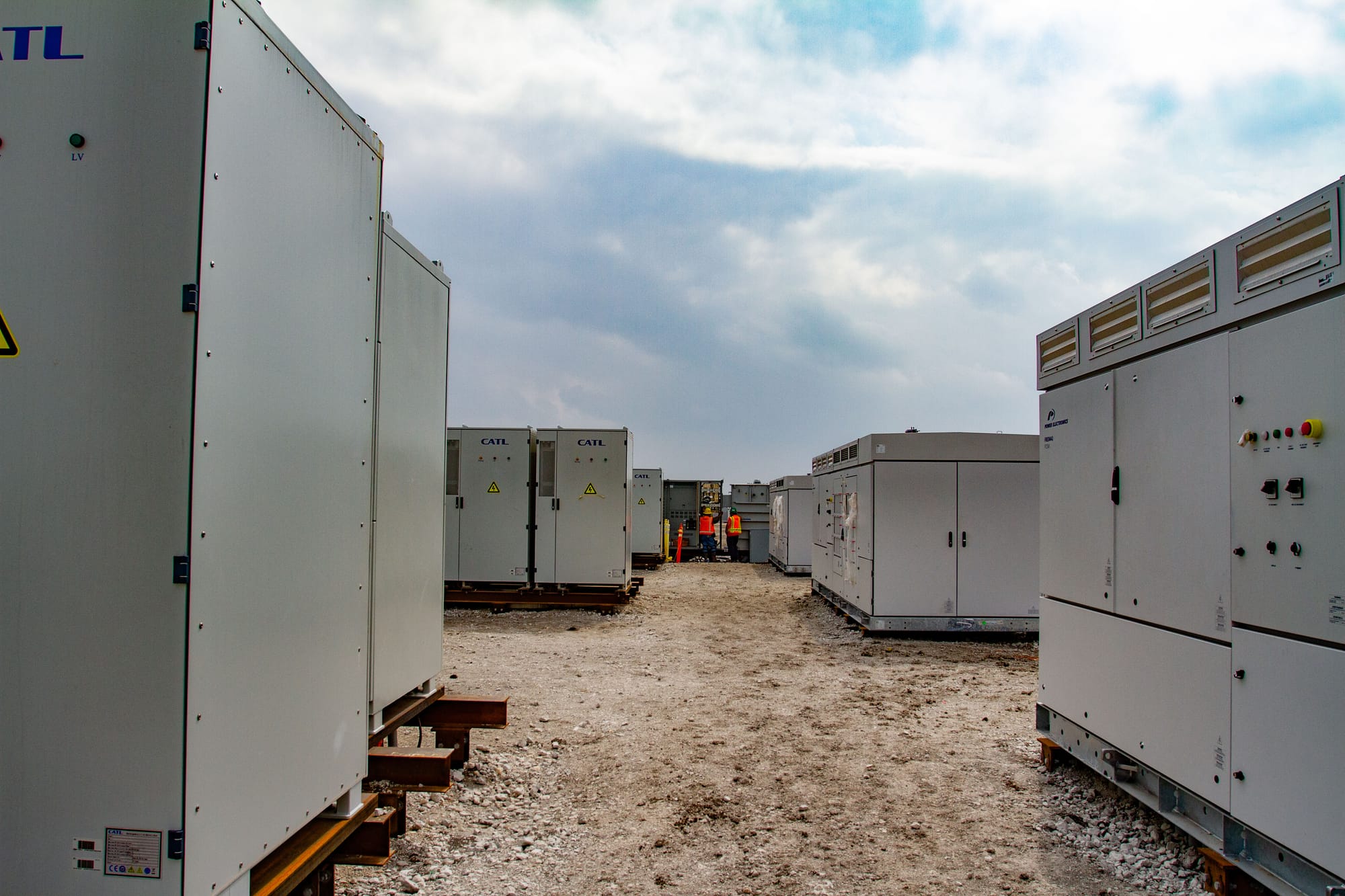
Sun Valley Battery farm near Abbott, TX. Part of Engie's solar photovoltaic plant at that location (250 MW) and battery storage (100 MW)
Full disclosure: one of my clients is a consultant to several prominent renewable energy companies. He trains "developers" on how to talk about renewable energy projects to landowners whom they are trying to secure leases with. The developers also go before local town councils, commissioner's courts, etc. to arrange for permits, tax rates and abatements, road use, and other matters of local regulation. (In the O&G world, these developers were usually known as "land men" or "land women.") I assist my client with these training exercises.
When we train young developers on negotiating with land owners and local government officials, we do our best to instruct them on avoiding political bias in their discussions. (My client's business is nationwide.) The developers report varying degrees of acceptance for renewable energy production in the target communities. Many are grateful and excited to hear about the potential income opportunities for them and their communities. Others are downright hostile. Some state and local governments like Texas have put up legislative hurdles that make it difficult to build a project.
Here are some of the questions (or declarations) that developers face when trying to secure wind and solar leases from local landowners and community members and suggested responses:
"I don't want to look at these damn windmills. They're an eyesore. Miles of solar panels are worse. I want to preserve the view that I've always had."
Wind turbines can certainly be seen for miles. But you or your neighbors have an income opportunity during the build-out and operation, as well as royalties from the production of clean energy. If a turbine or panels are put on your property, you will earn many times the price of its use as farm/ranchland. It's a steady, predictable income for the next 20 - 40 years. (Dependent on contract length.) Not only that, but millions of dollars will be put into your community through tax dollars which will go to your school district. (Most rural districts are desperate for funds.)
Not many years ago, people were rightfully upset that powerlines intersected their property, or that cell phone towers began to dot the countryside. That disrupted the views, too. But mostly now, you don't notice them as you've grown used to it. And with solar panels, we can plant vegetation that serves as a screen so that you're not looking at them.
"I hate those red lights that blink all night long on top of those towers."
Newer turbines are outfitted with lights that only power up when aircraft is in the area.
"I've seen YouTube videos of fires up in those wind towers, and also in battery farms."
Fire is a possibility, but the newer units have fire suppression systems built in. In the extremely rare instance of a fire in one of the wind turbine hubs or nacelles, there is no threat of flames catching other structures on fire. Flames are usually put out immediately - most of the videos that you see are smokey results after a brief fire is extinguished. Again, fires are exceedingly rare.
Battery farms are now built with fire suppression in mind. We also provide training and often donate firefighting equipment to local fire departments in case one of the battery units does ignite. Remember, we are in this as a business, and any fire event is very expensive for us and we do all that we can to minimize that risk.
"I guess those solar panels are Chinese, huh?"
Through the recent Infrastructure Investment Act, there are several domestic panel manufacturing companies coming online. A couple of these are located in Texas. Depending on the exact type of panel we need, we do everything we can to source our technology locally when it's available. Some might be purchased from overseas suppliers due to high demand or particular specifications.
"Those solar panels break during hailstorms and leak toxic chemicals and lead into good farm soil, into the water table!"
Modern solar panels are shatterproof, and much like your smartphone, will break in a spider-like pattern in the rare instance of a powerful hailstorm. There are no toxic chemicals inside any of the panels to leak. As with any electronic component, components inside the panel are soldered together. Solder has small amounts of lead... no more than a single bullet. None of this will "leak" into the ground.
"I heard on FoxNews that those turbine blades kill thousands of birds, just massacre them. Even eagles!"
Yes, the speed of the blades can be dangerous to birds. Several federal, state, and local environmental studies will be done before we install the first turbine. If there are endangered species in the area, then a turbine won't be installed. If it is determined that the project is in a migratory pathway, the turbines can be shut down or slowed during a migration. Using GPS, cameras, or ground-based surveys to track bird and bat flight habits can reduce the risk of collision. (If it has been ascertained that the client is a nature lover... it can be pointed out that rising global temperatures cause extinctions and loss of habitat - a far greater danger to wildlife than in-flight collisions with the turbines.)
"Ultimately, you're taking away good farmland... a way of life for us. All these wind farms and solar panels are taking away food production!"
For wind turbines, only an acre is used to secure the tower. Farming and ranching are possible up to the base of that tower. Solar farms take up more acreage, but in most projects, only a portion of a parcel of land is leased. Of course, it takes multiple parcels or possibly one large piece. And that land is actually being preserved and can be returned to ag use once the project has come to the end of its lifespan. Grasses and other vegetation are planted under and around the panels, and the soil is rejuvenated during that lifespan. The soil will be in better shape than ever after the project is complete.
And "agrivoltaics," the combining of agriculture and energy production on the same land, is growing in popularity. Sheep can be grazed under and around those panels. Pollinators can work the land.
Energy companies are required to post a decommissioning bond that serves as an insurance policy that the project will be completely disassembled and removed when the project is over. The land will once again be ready for farming.
"I have my rights as a landowner not to have to see this eyesore, not to have to put up with all the noise."
Solar farms make almost no sound at all. The sounds from modern wind turbines are about the equivalent of a dishwasher in the next room, and that's only if you're standing close to it. (We don't build them right next to homes.)
And we firmly believe in landowner rights, but your neighbor has those same rights. We are working in service of those neighbors who have signaled a desire to farm the sun and wind. We make every effort to be a good member of the community, but these other landowners wish to exercise their rights to do with their land as they wish.
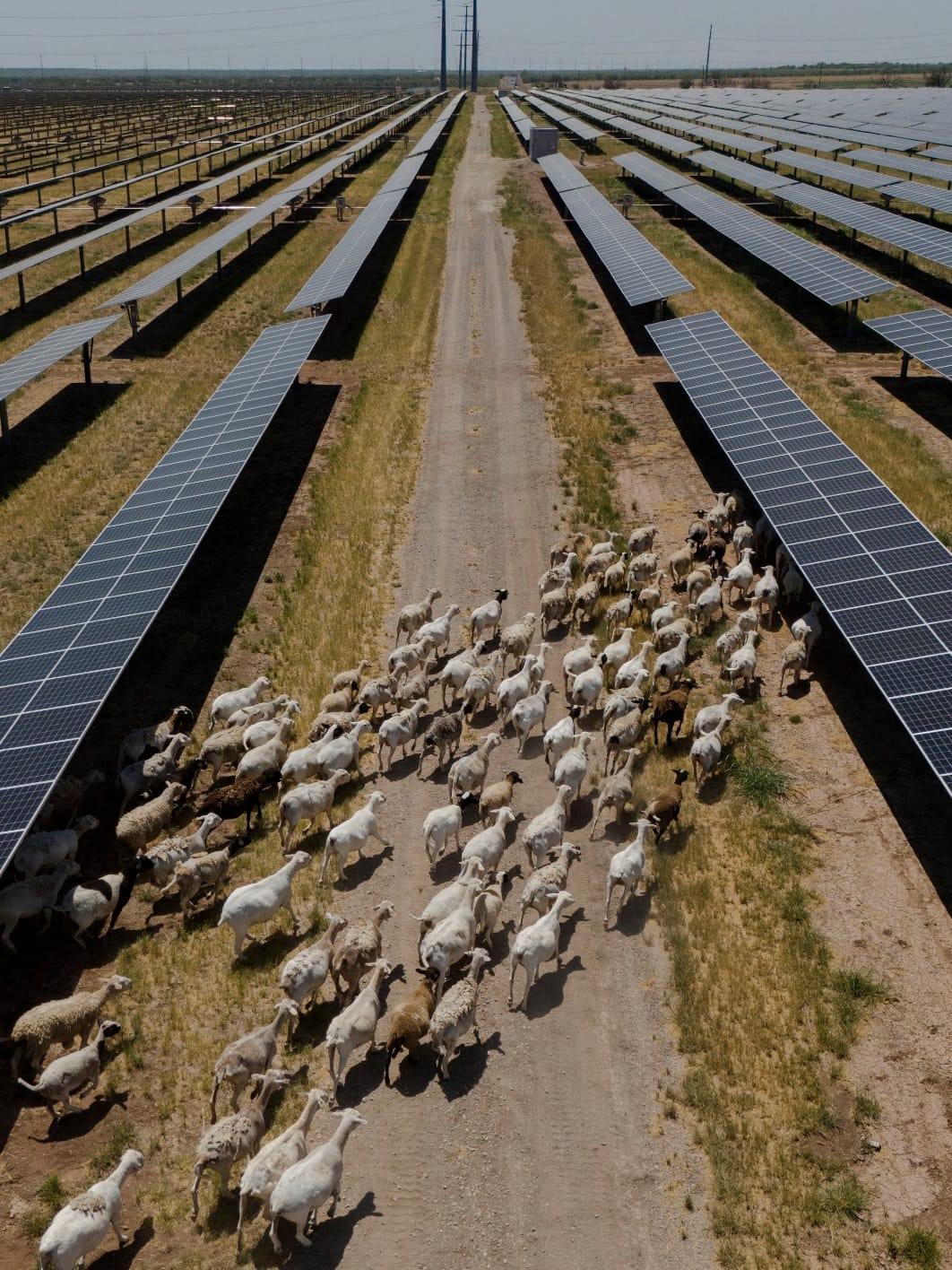
There are plenty more concerns than that, some are real, and much is disinformation. It's tough for developers in rural, red state areas - you're often dealing with a Fox News crowd that has been indoctrinated that "climate change" is a "hoax." (BTW, we counsel our young clients never to pick up the term 'climate change'... instead, refer to their work in terms of "clean energy" opportunities.) What's worse is the number of astroturfed groups that set up organized opposition to a project before a single town meeting can be scheduled. Often these groups are funded from outside the county or state. An active and powerful community leader sometimes leads the opposition. There are also part-time residents who don't want their trophy ranch or bucolic, weekend views disturbed.
But you know who loves the idea of wind and solar projects? That landowner when s/he sees the income numbers. After a lifetime of trying to scratch a living by making a crop in an unpredictable climate and unpredictable crop markets... they're glad to get hundreds of dollars an acre and/or a fat royalty payment guaranteed for 25 or 30 years. The money, the preservation of their land, and the comfort of leaving a legacy to their family... it's all a good package.
In the interest of honesty, there are always a handful of landowners who can't stand the thought of it. Some don't want to see the land disturbed. Some are hyper-partisan holdouts who would rather cut off their nose to spite their face - they would rather give up millions of dollars in payments (over the life of the project) to keep their partisan cred intact.
On a local level, politicians are under increasing pressure to get out of the way of renewable production. It can sometimes be the only taxable entity saving a school district from insolvency. Renewable energy has its own lobby groups ready to contribute to campaign coffers. But O&G lobbyists have deeper pockets. And let's face it, the old legacy billionaire families and various production companies have seemingly an endless supply of politician-buying power.
Texas' marriage to O&G interests seems secure. Till death do they part. But those wind and solar farms seem kind of cute, kind of sexy. No longer just a green energy fling, a renewable booty call... these are mature mistresses. They need some serious attention, they demand respect... and how about a nice apartment and a little spending money to buy some nice things, just like the O&G industry has?
Renewables won't be taken for granted anymore.